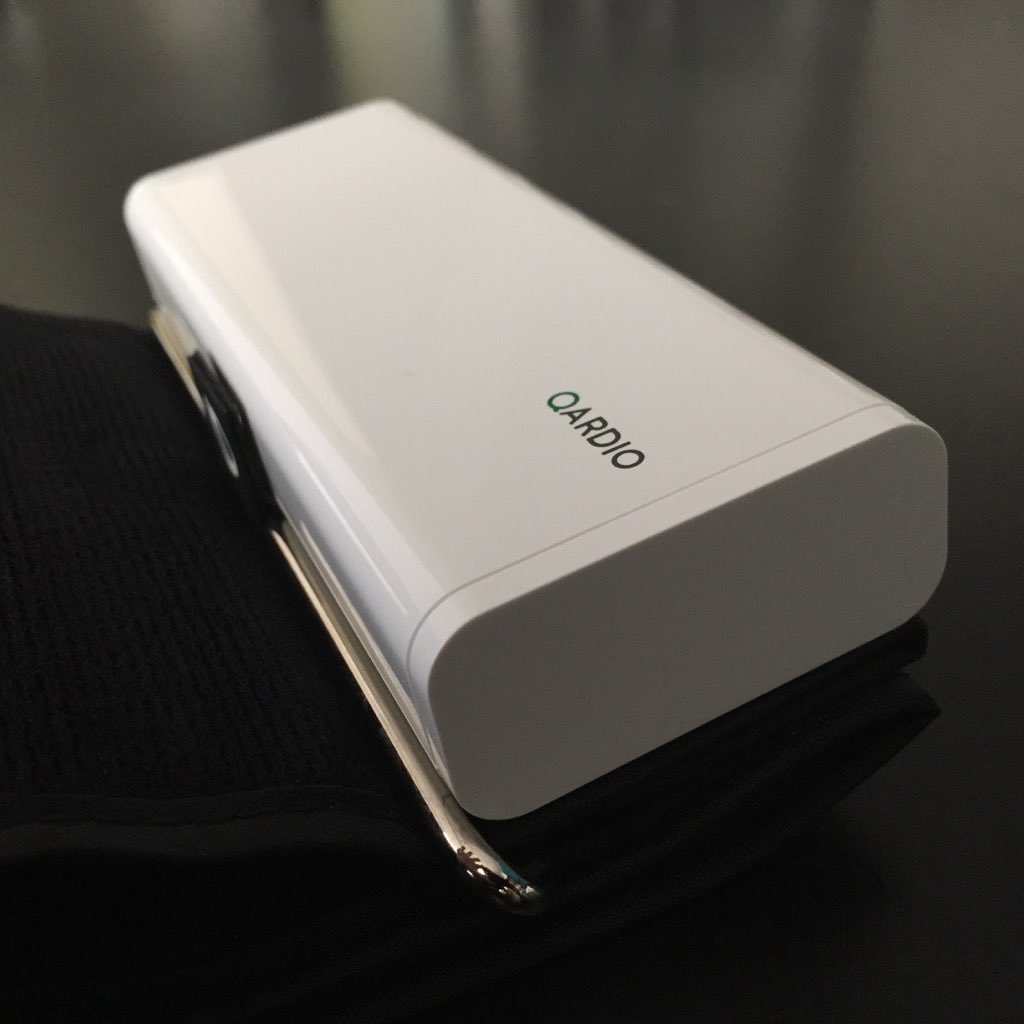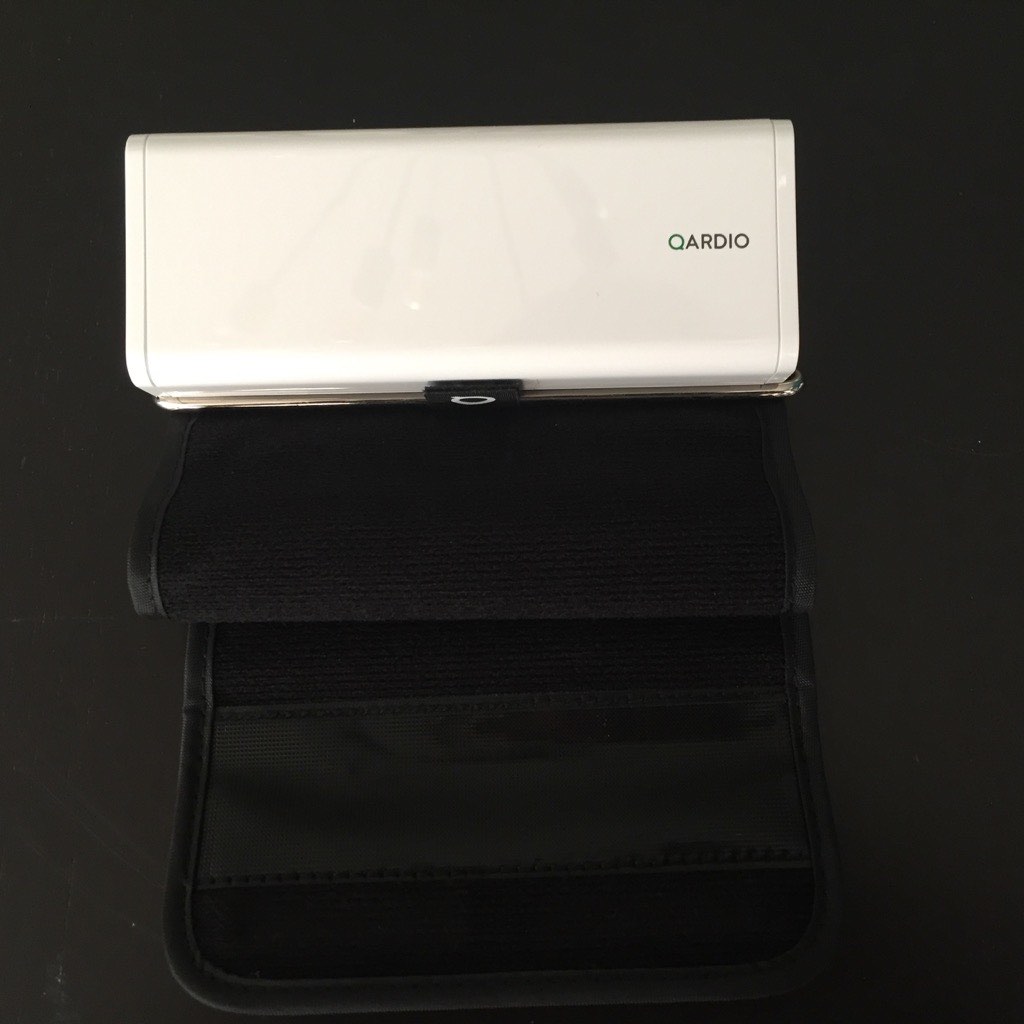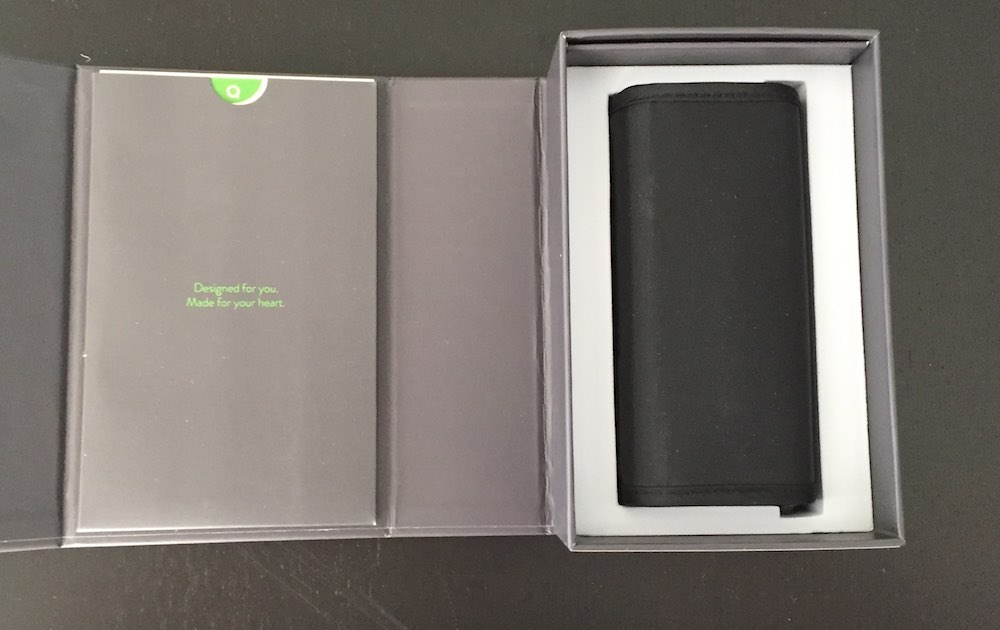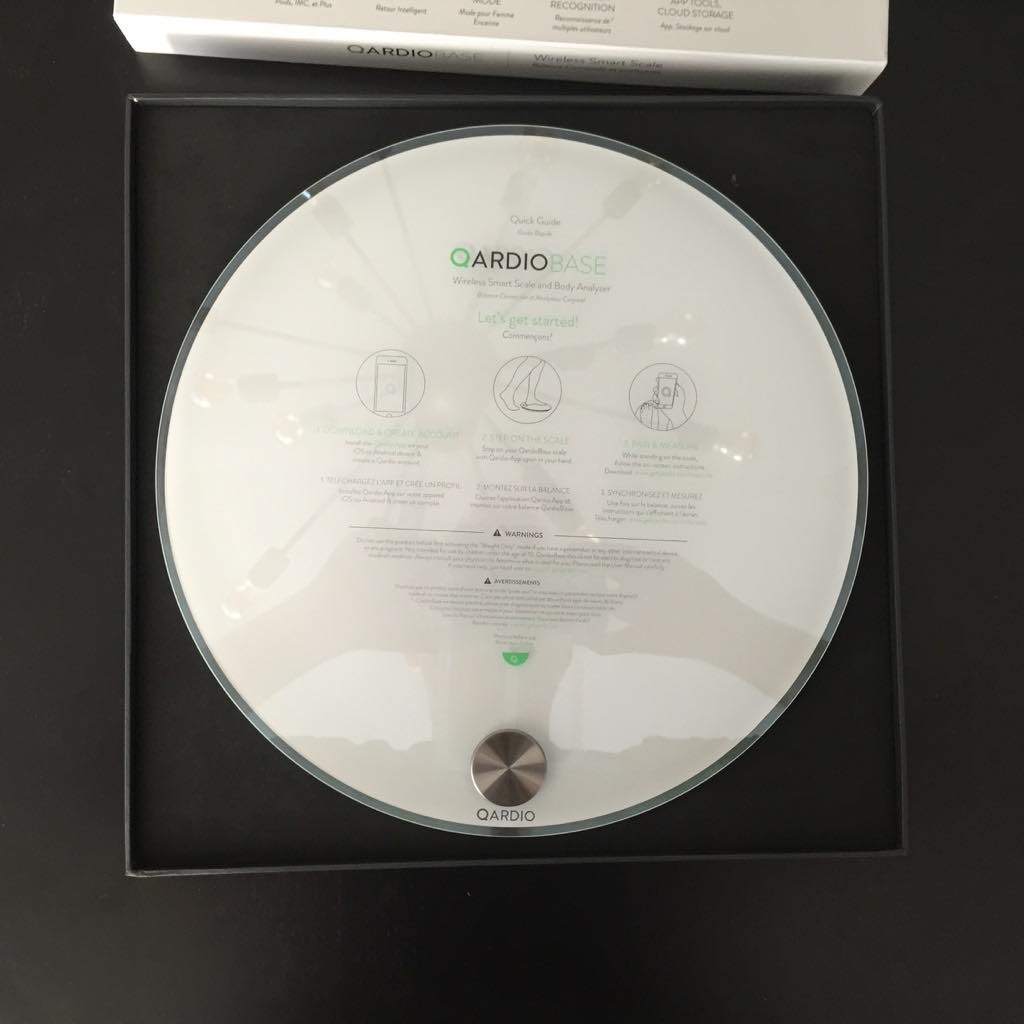 In the bundle I received from Best Buy Canada HQ were two products from Cardio – the QardioArm and the QardioBase. Aside from the fact that my word processor is desperate to change the spelling of Qardio to “cardio”, the name evokes what the brand is focused on: the health and wellness of your heart and circulatory system. Their tagline is “state of the heart technology”; I’m a sucker for auditory bon mots, so that gets a thumbs up from me.
In the bundle I received from Best Buy Canada HQ were two products from Cardio – the QardioArm and the QardioBase. Aside from the fact that my word processor is desperate to change the spelling of Qardio to “cardio”, the name evokes what the brand is focused on: the health and wellness of your heart and circulatory system. Their tagline is “state of the heart technology”; I’m a sucker for auditory bon mots, so that gets a thumbs up from me.
Unboxing QardioArm
The packaging for both of these devices is straightforward and elegant, like the devices themselves. The QardioArm comes in a sleeve that was a real pain to get open, but once you do the underlying packaging (held together with a magnet) pulls open to reveal the device and some thin starter guides that amount to “download the app and setup an account”
Using QuardioArm as a blood pressure monitor
 The QardioArm is a fascinating little piece. It’s a rectangular white brick that looks like something Apple would have devised, attached to a long rectangular piece of nylon with a velcro-like surface attached to it. It clasps shut with a magnet when it’s not in use and looks incredibly tidy; it is, without question, the prettiest blood pressure monitor that I have ever seen.
The QardioArm is a fascinating little piece. It’s a rectangular white brick that looks like something Apple would have devised, attached to a long rectangular piece of nylon with a velcro-like surface attached to it. It clasps shut with a magnet when it’s not in use and looks incredibly tidy; it is, without question, the prettiest blood pressure monitor that I have ever seen.
When you unfold it you can see the Qardio logo. That needs to point down towards your wrist as you wrap the cuff around your upper arm above the elbow. Don’t get that wrong; every time I did I ended up getting a bad reading that said I was in stage 2 hypertension, whereas doing it normal put me in normal or normal/high (my family has a history of heart disease so I’m not shocked there).
 Sidebar: getting the app setup was very quick; it asked for my first name and a password. To setup the QardioArm all I had to do was tap it against my phone and they paired instantly. This is a sight better than the old FitBit WiFi setup routine I had to go through a few years ago; setting up QardioArm was utterly painless and can be done by anyone, even those with very little technical knowledge.
Sidebar: getting the app setup was very quick; it asked for my first name and a password. To setup the QardioArm all I had to do was tap it against my phone and they paired instantly. This is a sight better than the old FitBit WiFi setup routine I had to go through a few years ago; setting up QardioArm was utterly painless and can be done by anyone, even those with very little technical knowledge.
Back to the review: once you have the cuff secured around your arm you can start the monitoring process. Getting it in place was a bit of a trick the first two or three times, but after that it was relatively simple. You can hold onto the QardioArm with one hand and tuck it in to your body, taking the time to pull the nylon piece around and secure it. You don’t want it super-tight, you should be able to fit a finger between the cuff and your arm without hurting yourself.
 The cuff inflates quickly and you can see your systolic pressure as it does. When the cycle is complete you get three numbers: your systolic and diastolic pressure, and your heart rate. I use an Apple Watch and Apple Health so I have access to these numbers on the go…after I took the time to turn that feature on in the app. It’s a privacy thing, so they’re not turned on by default, but they ended up on my dashboard when I did. I love how easily QardioArm integrated into my health routine; I had a physical last year that put my blood pressure in the normal category, so seeing myself stray into normal-high indicates to me that I need to work on my nutrition, hit the gym a bit harder, and maybe deal with some of those interpersonal things in my daily life that are causing me stress. All in all, a cool product that I can see myself using daily.
The cuff inflates quickly and you can see your systolic pressure as it does. When the cycle is complete you get three numbers: your systolic and diastolic pressure, and your heart rate. I use an Apple Watch and Apple Health so I have access to these numbers on the go…after I took the time to turn that feature on in the app. It’s a privacy thing, so they’re not turned on by default, but they ended up on my dashboard when I did. I love how easily QardioArm integrated into my health routine; I had a physical last year that put my blood pressure in the normal category, so seeing myself stray into normal-high indicates to me that I need to work on my nutrition, hit the gym a bit harder, and maybe deal with some of those interpersonal things in my daily life that are causing me stress. All in all, a cool product that I can see myself using daily.
One note: there are two positions that the QardioArm recommends you be in while you’re using it, either standing or sitting. Taking some time to let your heart rate settle is also advised for an accurate reading.
QardioArm comes in Yellow, Gold, and Imperial Red. The model I tested was white.
Unboxing QardioBase
This one was pretty simple: take the lid off the box, pull the QardioBase out, pull the sticker off and go. There were eight (!) AAA batteries pre-installed and it was ready to go right away.
 Using QardioBase
Using QardioBase
I love my FitBit Aria smart scale, but it definitely wasn’t easy to setup, and can be a bit of a mystery to use when it decides to misbehave. The QardioBase, on the other hand, may have just supplanted it as my favourite scale.
With the Qardio App already installed it was simply a matter of starting to add the Base, then standing on the unit with my phone near by. It pulled my login information over (I had to select whether I was Graham or a guest to confirm my account). From there, every time I have stepped on the QardioBase, it knows that it’s me.
I was asked to setup some goals; I need to lose a bit of weight (I put on some winter padding) before beach season, so I set my goal aggressively to lose 7kg. The last three days I have stepped on the scale I have seen a happy face as I’m trending towards that goal, losing both weight and body fat percentage.
 The Qardiobase is also more beautiful than my previous smart scale. It’s round, white, with no discernible screen; the data is represented by a dot-matrix display that is under the glass. It’s elegant and beautiful. It fits with the design of my ensuite and I love the styling.
The Qardiobase is also more beautiful than my previous smart scale. It’s round, white, with no discernible screen; the data is represented by a dot-matrix display that is under the glass. It’s elegant and beautiful. It fits with the design of my ensuite and I love the styling.
The scale brings the information I’m looking for into my Apple Health app directly (unlike my FitBit Aria, which needed a $3.49 app called SyncSolver to bring that data over because the CEO of FitBit famously scorned Apple Health). The app itself also represents the data beautifully, putting me in the green zone for healthy when my body composition started to adjust to a better place.
I love the feedback you get from the Qardio. There’s a smilie face that winks at you when you’re doing well. I haven’t seen the negative feedback in person, but there’s a blank look and a frowny, presumably for when you’ve had too much chocolate cake.
 Qardio Overall
Qardio Overall
I have to say that I’m loving the user experience here. From the act of getting the devices paired to how the apps handle data to how it integrates with Apple Health, it represents some seriously progress in fitness accessories. Qardio also fits perfectly with an Android phone from what I’m reading, and while I didn’t get a chance to test that out I can only imagine that their efforts there are on par with iOS. Both devices are multi-user friendly, and the QardioBase even has a pregnancy mode to help track changes through pregnancy. I’m not pregnant (shocking, I know) so I wasn’t able to test that, but it looks like a cool feature.
So while I’ve been a dyed-in-the-wool FitBit advocate, the superior pairing process, beautiful design, and integration with Apple Health puts the Qardio system one step ahead in my mind.



